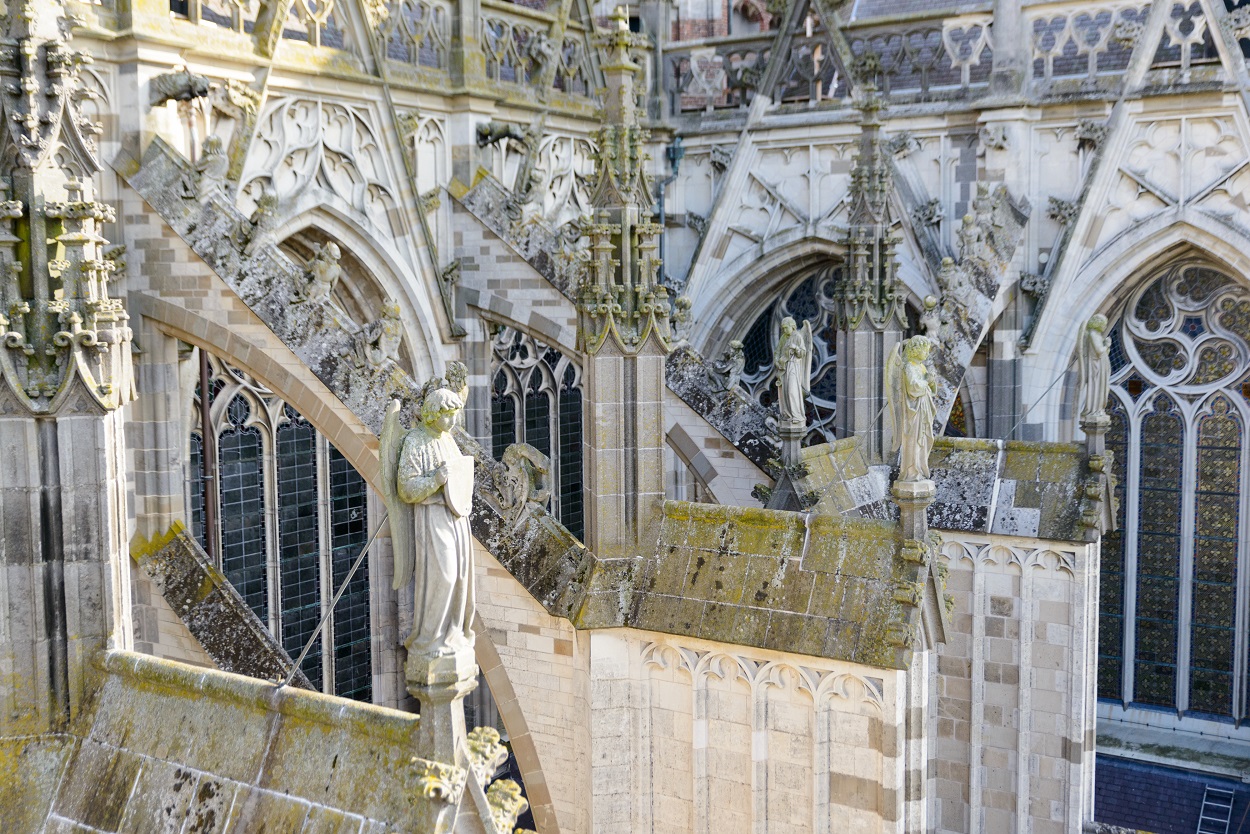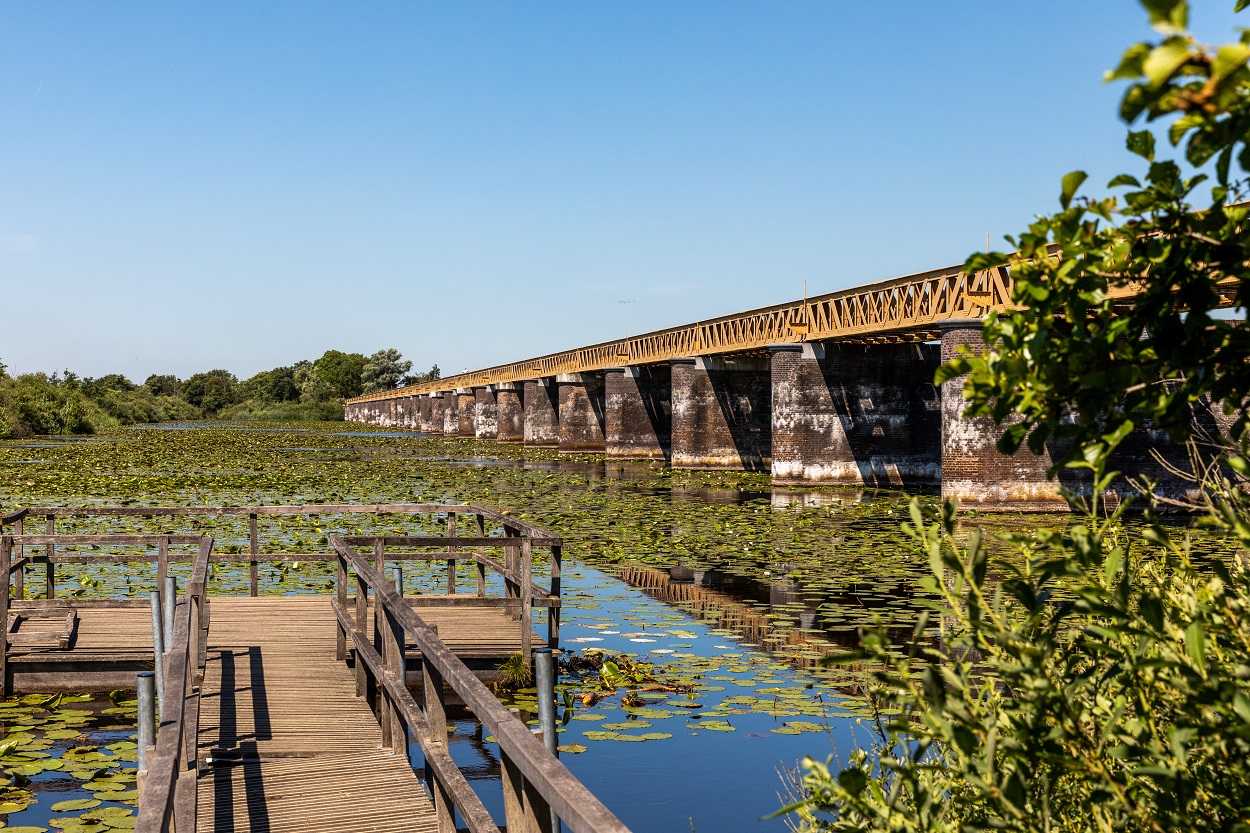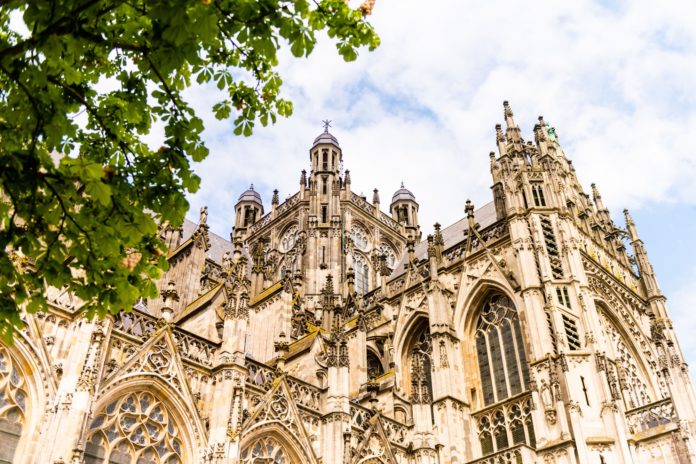The same reasons that make exploring Eindhoven city centre during our pandemic restricted times worthwhile apply to visiting Den Bosch. Much is closed, little is possible, but what is accessible speaks louder.
As I argued in a previous article, if ever there was a time that the customary commercial hustle and bustle of a vibrant city would not distract from the diversity and beauty of its buildings, it is now. That is as true for the often overlooked and ‘undramatic’ attractions of Eindhoven centre as it is for one of the oldest and most intact historic cities of the Netherlands: Den Bosch.
This series’ title is Exploring the Eindhoven Region, and its underlying assumption about what that umbrella term ‘Region’ means is that Brabantstad/Zandstad is really its most minimal interpretation. This dispersed metropolis may have various distinctive urban cores – Eindhoven, Tilburg, Den Bosch, etc. – but much is to be said for looking at it as one, incredibly green and diverse city. No way one can tire quickly of such a multifaceted backyard! All of its various ‘wards’ have something unique to offer. Here I want to focus on Den Bosch, just a short train ride away, and living proof that moaning about the lack of heritage ‘here in our city’ lacks substance.
Den Bosch was the more important urban core until the mid-nineteenth century. While Eindhoven was largely wooden buildings until the 17th century, Den Bosch’ build heritage goes back centuries more. When you walk through its inner-city, largely pedestrianized, with its canals and rivers, its squares, and countless beautiful facades, you enter a different world and one that is way less of a tourist haunt than anything you’ll see in the Western parts of the country. Obviously, like everywhere else, a lot of what you would normally do when visiting a gem like this, museums, a boat ride, etc., are currently not possible. But as this historic centre is going nowhere, and you would want to visit it more than once anyway (you want to really feel at home in your own backyard, don’t you?), that doesn’t matter.
A slow and attentive walk through the old streets plus a visit to the biggest highlight of the town, and one that is open to the public, Saint John’s cathedral, is already more than one can fully absorb in one go. Do the same ‘program’ another time and you are bound to notice a lot of beauty and interest that escaped your attention the first time around. The cathedral is the height of Brabantine Gothic architecture in the Netherlands, finished in 1525 and replacing a 13th-century Romanesque predecessor of which parts are still evident in the current structure.
Saint John’s was modelled on Amiens Cathedral and while its height doesn’t match that of the famous original, its spacious layout ‘works’ in the way intended: inspiring awe. The interior suffered through two iconoclastic onslaughts, a Protestant one in the 16th century and a Catholic revivalist one in the 19th, but there is still enough pre-19th century around. This includes some remnants of 15th-century wall paintings. The elaborate painted decoration of the vaults is mostly of the 19th century. You won’t find a church like this anywhere else in the Netherlands. As behoves a Gothic cathedral, the exterior is a treasure trove of animals, devils, monsters, musicians, and assorted characters, sitting astride the flying buttresses.

That the city has such a cathedral tells you that, unlike Eindhoven, it was a major centre of commerce and governance during the Middle Ages, way more than just a market town. The Southern cities of Leuven, Mechelen, Brussels, and later Antwerp, have always been the centre of the Duchy of Brabant. Den Bosch, especially in its heyday, the 15th century, when the Dukes of Burgundy ruled Brabant and the province was top dog in the Low Lands, mattered a lot. In the 16th and especially 17th century, Brabant lost out to the harbours of Zeeland and Holland, and like the rest of Brabant, Den Bosch stagnated. From the second half of the 19th century onwards the economic takeover by the growing industrial hubs of Eindhoven, Tilburg and Helmond set in motion. Luckily the post-WWII, modernist push for car access and disinterest in historical heritage was stopped in its tracks by popular resistance. As it was everywhere, but, similar to the heritage treasure trove of Amsterdam, the stakes in Den Bosch were much higher than in e.g. Eindhoven. Count yourself lucky!
The city is called the ‘moerasdraak‘ (the marsh or swamp dragon) because its surroundings were treacherous swamp, much feared by its enemies during the protestant 80 year Dutch revolt against their Catholic Spanish rulers (Den Bosch was Catholic). Quite uniquely in the Netherlands, to the South of the old city, these wetlands still reach right up to the former city walls. This feature makes it easy to combine immersion in some of the Netherlands most spectacular heritage with a couple of hours in equally one-of-its-kind Dutch outdoors. Those just wanting a green breather: the Bossche Broek is the nature reserve to visit. If you are in for a more substantial walk: combine the inner city with the Moerputten. One of the few remaining patches of low land peat, which used to be traversed by an industrial railway line. The former tracks, partly a dike, partly a long bridge, now make for a great walking trail through this area, a trail that also includes a boardwalk. Den Bosch is an even smaller city than Eindhoven, nothing is far away.

Normally I am not into promoting local specialities, but I have to make an exception for the guilty pleasure of the Bossche Bol. If you visit by train, make sure to treat yourself to an original from confectionary Jan de Groot. Yes, it is a calorie bomb, so if you need an additional reason to make this a very active day out, one Bossche Bol is all it will take. You need a sweet tooth, but then it is the best reason around.
Both Den Bosch’ inner city and its surrounding nature differ dramatically from its Eindhoven equivalents. If there is anything that makes this heavily populated little country, stand out amongst the world’s states, it is its diversity. You inhabit the world’s biggest, greenest and most diverse city-state. What a backyard to explore!
For Eindhoven News: Roger Henke.
More background info, resources, and thoughts, visuals and audio about Eindhoven, The Netherlands, cities, exploring environments and assorted fancies: https://runandwalkeindhovenregio.org/
Episodes in this series:
- The routes of Visit Brabant
- Architecture City
- Audio tree walks in the city
- The Dommel Valley
- The City Centre
- Historical Atlas of Eindhoven
- Den Bosch
- Oisterwijk fens and Kampina
- het Groene Woud











